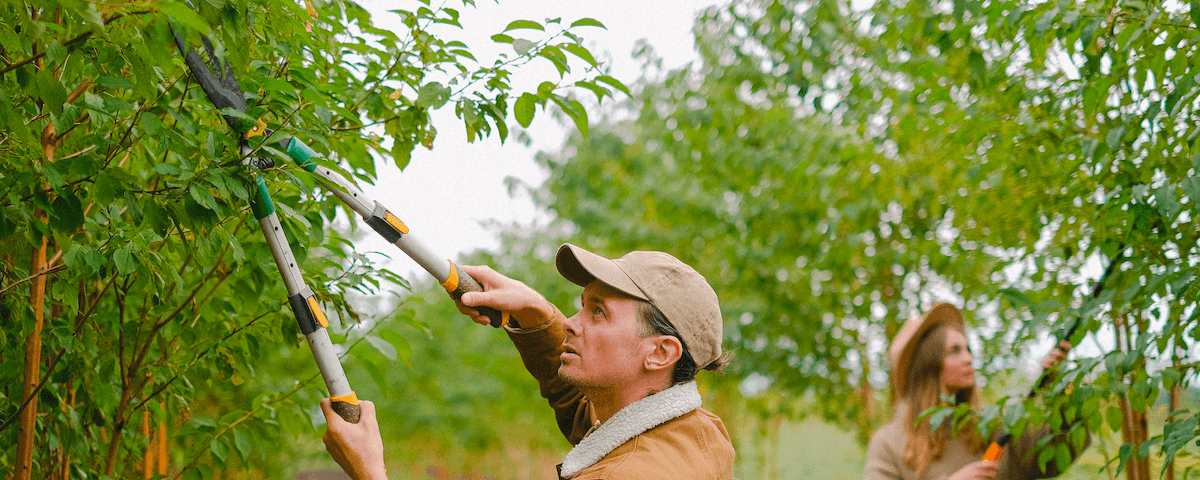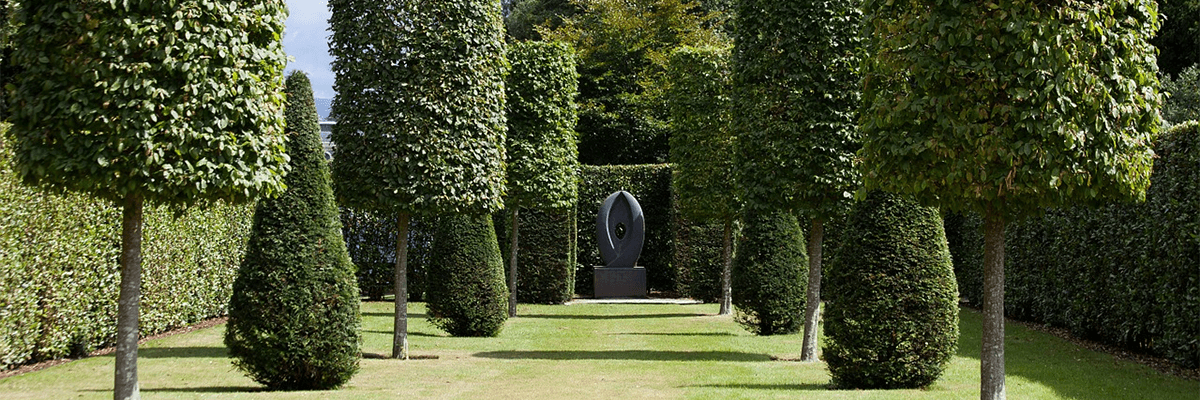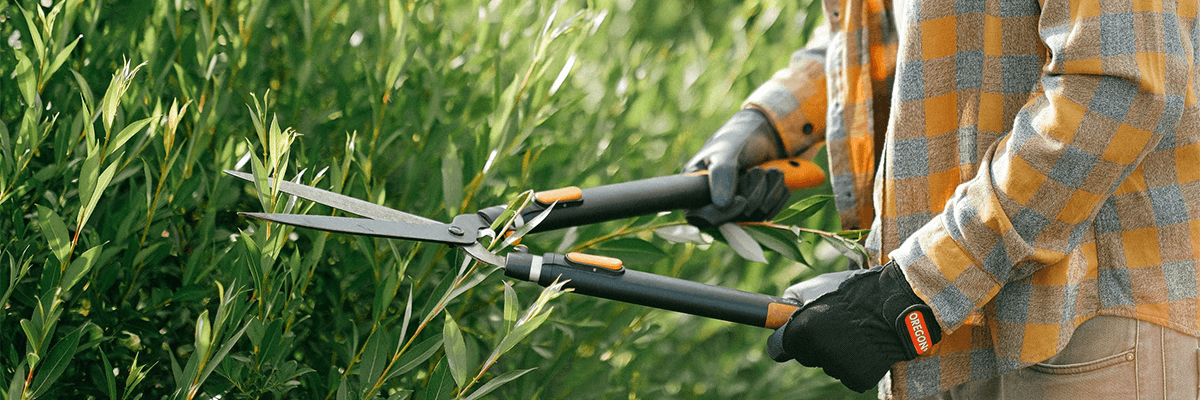2024 Tree trimming estimate template

Learn how to estimate the price of several tree services, and find out why you should use a tree trimming estimate template.
A lush, green tree makes a beautiful addition to any yard. However, their growth can get out of hand seemingly overnight, which quickly turns them into an inconvenience.
In order to keep your yard as tidy as possible, you need to make sure that your trees are always trimmed and in good condition. Trimming a tree can be difficult if you don’t have the proper tools, and dangerous if it’s a 20-foot tall tree.
This is why the services of a professional tree trimmer are valued. But how exactly do you estimate the price of tree trimming?
In this pricing guide, you’ll:
- Learn how to estimate the price of several tree services.
- Find out why you should use a tree trimming estimate template.
- Answer “What is a fair price for tree trimming?”.
How much does tree trimming cost?
Before you begin creating an estimate for a customer, you need to have an idea of how much you should charge for tree trimming. And while the average cost of tree trimming may seem like a black box, it doesn’t have to be.
Like any landscaping job, the cost of tree trimming varies. The typical price of tree trimming is $250 – 500, but this price depends on the nature of the job.
You may encounter customers who seek tree pruning services. Pruning requires a different process than trimming, so it’s important to clarify the extent of your services beforehand.
Here’s how to explain pruning and trimming to your customers.
Tree trimming vs. tree pruning
The main difference between pruning and trimming a tree is that one service is done for the tree’s health while the other is mainly for aesthetic purposes.
Pruning involves selectively removing specific parts of a tree to keep it healthy. When pruning a tree, you are removing any dead or diseased parts that harm the rest of the tree and prevent it from growing.
Parts that are removed during the pruning process include:
- Roots.
- Buds.
- Branches.
Tree pruning requires additional training and skill, and most people seek the help of a professional arborist to check the health of their tree.
However, if you have the right experience, don’t hesitate to add pruning to your services and include it in your tree trimming estimate template.
In contrast, trimming is done to make the tree look nice. You should only trim a healthy tree that does not need to be pruned.
The most popular reasons for trimming a tree are to:
- Achieve a specific shape.
- Remove branches that are in the way.
Below is an example of trees that have been trimmed to perfection.

Image credit: Stux via Pixabay
If a tree is trimmed too much, it could be harmful to the tree. This is why customers enlist the help of professional tree trimmers to make sure the job is done right.
If your customer does not know the difference between trimming and pruning, explain both processes to ensure they do not confuse the two.
Tree pruning cost estimate
Tree trimming and pruning typically cost the same, with the average job costing between $400 and $800.
However, pruning can cost more if the job requires an arborist. Sometimes called tree surgeons, arborists specialize in improving tree health, preventing disease, and enhancing public safety.
Other factors that might influence the total cost of a pruning project include:
- Tree size.
- Number of trees.
- Tree health.
- Tree type.
- Time of year.
- Accessibility (e.g. obstacles such as fences, plants, and other structures).
- Your location (urban or remote).
- Additional services (e.g. repairing damaged landscaping, pest control, other treatments).
- Cleanup.
Tree trimming cost per hour
Typically, the price range for professional tree trimming costs anywhere between $50 and $75 per hour. Ultimately, how much tree trimming services cost depends on whether services are charged by the hour or by the bush.
The national average cost of tree trimming is $63 per hour. On the lower end, more affordable contractors charge only $25 per hour. On the higher end, more experienced contractors charge $90 per hour.
Factors that influence this rate include:
- Bush size.
- Equipment required.
- The number of bushes.
- The frequency of service.
- Additional services (such as mulching or hedge trimming).
- Location.
When it comes to tree trimming, there are several factors you have to take into account.
Factors that affect tree trimming costs
There are a few factors that affect the cost of tree trimming prices. Some major ones include:
- Type of tree.
- Size of tree.
- Quantity.
- Location.
You don’t have to include all of these variables in your tree trimming estimate template, but you have to keep them in mind when creating your estimate.
Let’s explore how different factors influence your prices.
Type
Generally, the main reason the type of tree matters is because it’s a good indicator of the size.
Certain trees such as pine trees and palm trees grow quite tall, which means that the top is more difficult to access than other trees.
That being said, the tree species can indicate how much more work it will take to trim it. For example, pine trees have small branches, whereas an oak tree has thicker branches that may require more work to remove. So expect your average cost of oak tree trimming to be higher than other work.
Pro-tip: Plan for your oak tree trimming cost to be higher than that of other trees.
Size
As mentioned, the size of the tree is one of the main elements that you’ll use to determine the cost of a job. The taller the tree, the more it will cost to cut.
Here are some national averages based on tree size:
- Up to 25 feet: $250 – 525.
- 25-50 feet: $150 – 800.
- 50 feet and up: $300 – 1000+.
Not only do taller trees require additional equipment to reach the top, but they also tend to have more branches to cut.
Your main job as a professional tree trimmer is to cut extra parts off of the tree, so naturally, the more branches a tree has, the more work you need to do.
To make it easier, you can break down prices based on height in your tree trimming estimate template.
Quantity
You may have customers who request your tree trimming services to deal with only one tree in their yard. Others, however, may have several trees that need to be trimmed.
It’s important to discuss this information with your customer ahead of time to determine which trees they want to be trimmed.
Even if your customer only wants one tree worked on, the surrounding trees could impact the job and require additional maneuvering.
Location
You must know the exact location of the tree that you are trimming and everything near it. In order for you to trim it, the tree has to be accessible.
If any obstacles would get in the way of you accessing the tree, you may not be able to safely complete the job with a truck and have to use climbers instead. This process requires more labor and is, therefore, more expensive.
Obstacles also make it difficult to toss down branches as you cut. You may have to lower them with a rope, which is also more time-consuming.
Obstacles that may impact the job include:
- The house.
- A shed.
- Power lines.
- Other trees.
If these obstacles are present and interfere with the job, make sure to include any additional costs in your estimate.
Debris hauling
Your customer will not be very impressed with your service if, at the end, you leave a pile of branches on their lawn.
As with any landscaping service, you need to haul away the debris left over after the job. You can factor the costs associated with hauling debris into your tree trimming estimates (like dump fees).
Frequency of service
In general, trees should be trimmed every 2 to 5 years. However, depending on the type of tree, annual tree trimmings might be necessary.
For example, younger trees need to be trimmed more often because of their rapid growth, whereas older trees require less frequent maintenance.
Pro-tip: Consider the age of the trees to accurately factor tree maintenance cost into your estimate.
Urgency
Tree trimming services are rarely urgent, but there are a few circumstances where a customer requires your services as soon as possible.
One example is when the branches of a tree threaten a home’s structure. Another is when pests take over a part of a tree, and that part needs to be pruned before they take over the rest.
Although there aren’t many circumstances where emergency tree trimming is necessary, emergency tree removal is common after an intense rain or snowstorm.
Because of the urgency of these situations, it is appropriate to charge a premium for your service on top of your normal prices.
Tree removal and pruning are two other services you can offer, but you don’t have to limit yourself to trees. Let’s take a look at some additional services that are possibly within your scope.
Other types of services
Although trees are often a centerpiece in a yard, many of your customers may have other plants on their property that require care.
Landscaping businesses typically offer most other yard services. However, offering additional services to your customers has several benefits such as:
- More frequent visits.
- Higher sales and revenue.
- Enhancing the value of your services.
Here are some additional services your business can offer to increase revenue.
Bush trimming
You most likely already have the tools for bush trimming, so if you also have the experience, then it’s a great service to offer your customers in addition to tree trimming.
Bush trimming requires more frequent care than tree trimming, usually once or twice a year, so it’s a good service to help retain regular customers.
The average bush trimming cost ranges from $50 – 75.
Hedge trimming

Image credit: Anna Shvets via Pexels
A hedge is a row of bushes planted closely together. As a result, they require different trimming techniques than standalone bushes — causing the average cost of hedge trimming to vary across jobs.
Customers should have their hedges trimmed at the same time as their bushes. This saves you having to do several visits and you can offer it as a bundled service to save your customers money.
You can expect your hedge trimming cost to range from $200 – 800.
Pro-tip: Offer a trimming and removal package to upsell your customers on the perfect yard. Simply add your desired profit margin to your current trimming rate plus the average cost to remove bushes to get started.
Mulching
Many gardeners describe mulching as a necessary step in maintaining the soil that bushes, trees, and hedges are planted in. Installing fresh mulch cleans up the bed the bushes are planted in, giving them a fresh look.
The cost of installing mulch varies, but it’s usually $20 – 45 per cubic yard.
If your customer requests any of these services in addition to tree trimming, you can add them to your “additional services” section of your tree trimming estimate template.
Tree branch trimming
How much a customer pays for tree branch trimming will vary according to the number of branches, tree type, and tree size.
If a customer only needs a few branches trimmed, costs can run as low as $85 for a single project. Trees larger than 60 feet tall can set a customer back as much as $1,267.
Other factors that may influence the cost of tree branch trimming include:
- Pests (rotting can make trimming riskier).
- Disease.
- Location (e.g. trees near power lines can cause accidents).
- Additional services (e.g. removal or grinding).
- Equipment required.
Don’t waste time with manual calculations. Our built-in invoice generator handles it all, giving you a professional PDF that’s ready to send — and getting you paid sooner.
What to include in a tree trimming estimate
Most professional tree trimming businesses do not charge by the hour.
However, you have to consider the cost of labor when establishing your prices, and that’s measured hourly. According to the U.S Bureau of Labor Statistics, the average hourly hourly rate for tree trimming professionals is $21.18.
You don’t have to include labor costs in your tree trimming estimate template.
The most efficient way to charge is based on a visual assessment of the tree and what needs to be done. From there, you give a flat rate for tree trimming, then the rate for each additional tree service.
Be sure to factor in all of your expenses to your prices, including:
- Labor.
- Transportation.
- Equipment.
- Overhead.
- Profit.
Tree trimming FAQ
Here are some helpful questions to provide you with more tree trimming tips:
- How to write an estimate for tree removal?
- Is there a tree trimming estimate template?
- How to bid on tree removal jobs?
- What should it cost to trim trees?
- How much does hedge trimming cost?
How to write an estimate for tree removal?
Creating an estimate is the most important step to complete before you actually start any professional tree service, including tree removal.
When creating a tree removal estimate, keep the following elements about the tree in mind:
- Height.
- Diameter
- Location.
- Condition.
Use these factors to determine how much it will cost you to remove the tree, and present the final number in your tree service estimate.
If they request any additional services, such as stump removal, include the price under additional costs.
Pro-tip: Writing an estimate is much easier when you have a tree trimming estimate template.
Is there a tree trimming estimate template?
When it comes to creating a tree trimming estimate template, you can use Excel or more advanced software or create your own.
To help you get started, you can download our free tree trimming estimate template and customize it for your business needs.
If you don’t see the download form, download template here.

How to bid on tree removal jobs?
Most homeowners will be tempted to accept the lowest possible bid. While these bids might seem like a great value for money, this isn’t always the case.
As such, contractors shouldn’t worry too much about offering the lowest bid – instead, they should offer the best, most cost-effective solution that addresses the client’s issues.
Here are a few tips for coming up with effective and profitable bids:
- Present a sizing chart: No two contractors have the same sizing standards – what is small to one may be medium to another. Come up with a reasonable range for clustering sizes. For instance, you might categorize trees under 30 feet as small, while large trees are those above 60 feet. Consider trunk thickness as well.
- Research tree types: While size is a more reliable determinant of project costs, knowing tree types can go a long way when providing a quote. For instance, some trees might be more prone to developing disease or don’t thrive as well under specific weather conditions.
- Consult ISA-certified arborists: Some tree removal projects will require the expertise of a certified arborist, especially if you are dealing with diseased or rotting trees. Arborists can provide advice regarding future lawn care and provide immediate solutions to affected areas.
What should it cost to trim trees?
How much tree trimming costs may vary significantly depending on the following factors.
- Inspection: While optional, inspection is often necessary, as it can indicate whether a tree requires additional treatment. Tree inspections typically cost between $30 and $150.
- Tree size: 30-foot trees usually cost between $100 and $400 for a trim, while trees exceeding 60 feet can cost more than $1,800.
- Season: Most contractors prefer to trim trees during the late winter, when branches are not actively growing. Trees also have fewer leaves in the winter, making it easier for contractors to observe structures and other obstacles.
- Accessibility: Inaccessible trees can cost 25 to 50% more to trim. Consider any obstacles (such as fences or fixtures) that might make it more challenging to access. Contractors may charge more if certain areas are out of range from bucket trucks or platform lifts.
- Location: Tree trimming in rural areas may accrue higher costs because of travel. Costs may also shoot up in upscale urban neighborhoods.
- Cleanup: Larger trees naturally produce more debris than smaller ones and require a more comprehensive cleanup.
- Pests: Trimming diseased or infested trees can rake up significant charges because of instability or rot. Removing diseased limbs can cost an additional $50 to $500.
How much does hedge trimming cost?
Depending on specific factors, hedge trimming can cost anywhere between $48 and $79 an hour, with the average median at $63 an hour.
On the low end, hedge trimming can cost as little as $35 an hour, with higher-end projects costing $100 an hour on the higher end.
Other factors that can affect hedge trimming costs include:
- Landfill fees and municipal pickup: Leftover debris from trimming can increase costs by $25 to $55 per job. Customers can eliminate this additional cost by bagging debris themselves and handing them off to regular trash pickups.
- Hedge height: Naturally, taller hedges cost more than shorter ones to trim. When trimming hedges above 15 feet, homeowners might have to hire an arborist, which can increase costs by up to 20%.
- Accessibility: Intricately built hedges can be harder to trim than simple, linear ones. Terrain and slope can also influence final costs.
- Equipment: Small, simple hedges typically don’t require more than a simple trimmer and tarp. In comparison, larger and more intricate hedges may require additional equipment.
- Location: Hedge trimming typically costs more in densely populated areas where the structure may not be as accessible.
- Additional services: Homeowners who want to add a pop of color to their hedges may pay an additional $4 to $14 per square foot for flower planting.
Wrap up: Why estimate the cost of tree trimming
Tree trimming can be a risky job, so you have to charge accordingly. That’s why it’s important to know:
- The going rate for tree trimming.
- How to estimate the cost of all of your tree trimming jobs.
- The average cost of trimming a tree.
You should thoroughly assess every job and provide an accurate estimate to ensure that you make a fair profit and strengthen the value of your services.
A tree trimming estimate template simplifies this process by taking the manual work out of it. This leaves you more time to give your customers top-notch service and find ways to bring in more sales.
Image credit: Anna Shvets via Pexels



